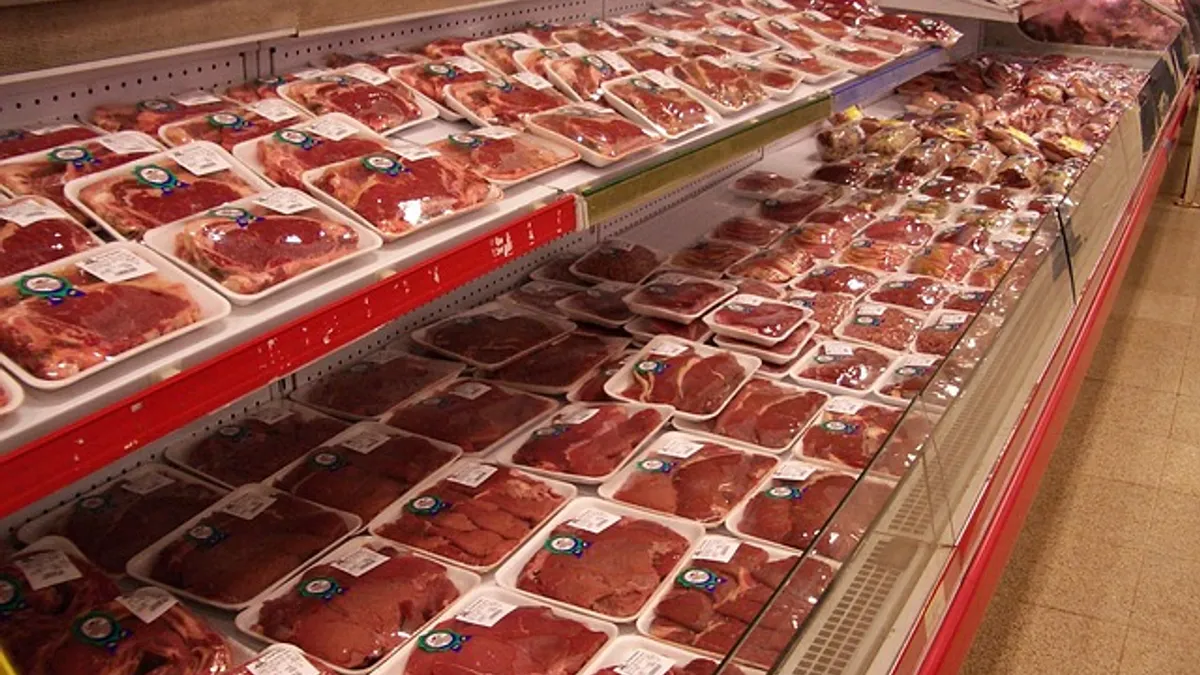Dive Brief:
- A growing number of online meat sellers are cropping up these days, Bloomberg reports, potentially putting pressure on grocery meat departments. Porter Road, which recently expanded delivery beyond its Nashville, Tennessee home market, makes 40% margins on its meat boxes and recently raised $1.5 million in venture funding. Greensbury Market in New York saw sales increase 50% last year.
- Mail-order meat isn’t a new concept, but these outfits say they’re bringing the concept into the modern age by focusing on provenance and sustainability. Porter Road operates its own slaughterhouse in Kentucky and also packages and ships its selections. It also uses recyclable and compostable materials in its packaging.
- Fresh meat is a $55 billion a year business, Bloomberg notes, with gourmet and sustainable meats becoming increasingly in-demand. According to Nielsen, grass-fed meat sales have grown 2,000% over the past five years and now bring in $360 million annually.
Dive Insight:
The overall impact these online sellers are having on supermarket meat departments is miniscule right now. But there are a few key takeaways from this trend that make Porter Road, Crowd Cow and other e-butchers worth following.
First, despite all the reports noting that consumers prefer to buy perishable foods in stores, online meat sales are growing rapidly. According to the Food Marketing Institute's recent “Power of Meat” survey, 19% of shoppers reported buying meat online at least once last year — up from just 4% who said the same in 2015. Although consumers can’t see the meat they’re buying or chat with a department specialist, vendors are still able to convince consumers with their online marketing and transparency efforts.
This is part of a larger and somewhat worrying trend for grocers. Although supermarkets pride themselves on their meat department staff and rely on the section to draw customers to stores, research shows shoppers are visiting retailers less and less for their fresh meat needs. Nielsen research from last year found that meat sales growth through alternative channels like discounters and online companies was outpacing grocers’. Retailers are also having a hard time drawing millennials to their meat counters, with just 47% reporting they buy their meat at supermarkets these days, according to FMI’s Power of Meat survey.
This isn’t to say the meat department is a ghost town these days. All types of sellers are benefiting from robust demand right now, despite the growing popularity of alternative protein sources. Meat lovers’ appetites increased during deflation, when prices were low, while many consumers these days follow a flexitarian diet that allows some meat, fish and poultry.
Another big takeaway from the online butcher trend is the degree to which shoppers prize transparency, sustainability, ethics and expertise in the meat category. Crowd Cow customers love buying from small farms and not wasting any part of the animal. Porter Road customers, meanwhile, select the company because it operates its own processing facilities, promises better treatment for animals and better pay for farmers.
Grocers have gotten on board with this movement, but they may need to do a better job of broadcasting this fact. With more and more retailers offering store pickup and same-day delivery, there’s no reason they can’t reach meat customers online, too.
Rather than retreat from meat, grocers should redouble their efforts in the category. Fareway Stores in Iowa recently opened its first standalone meat market. That may not be a step every retailer can take, but they can certainly invest in quality staffing and customer service. To keep stores relevant in the age of Amazon, grocery meat departments offer a one-to-one connection that can’t be duplicated online.









